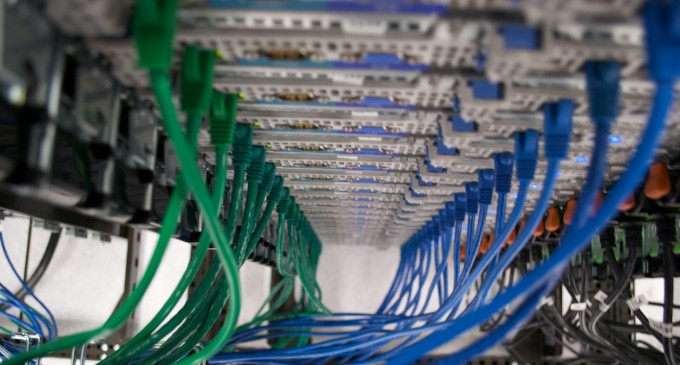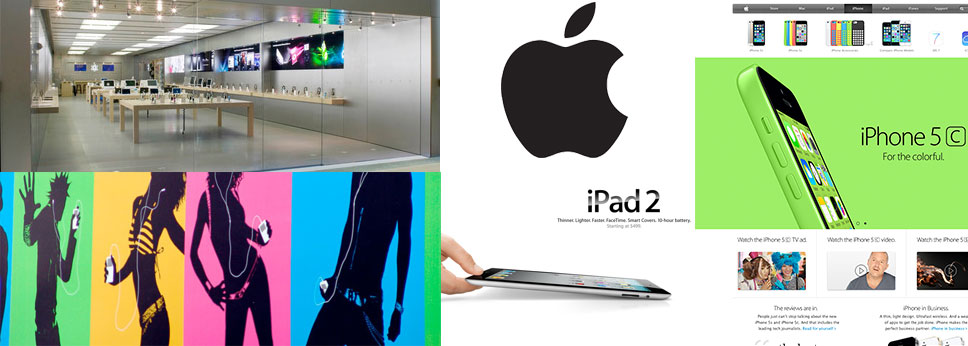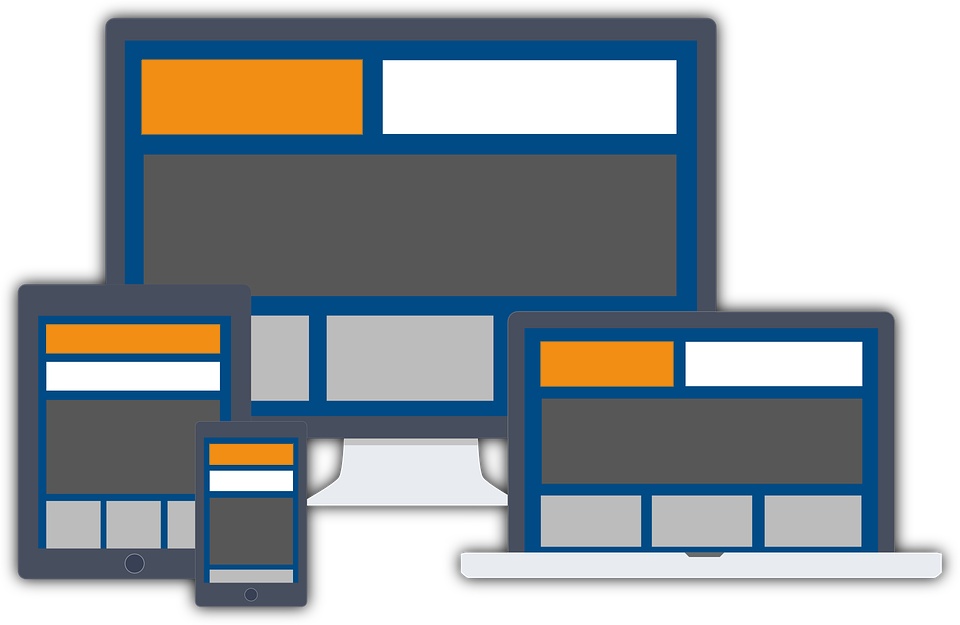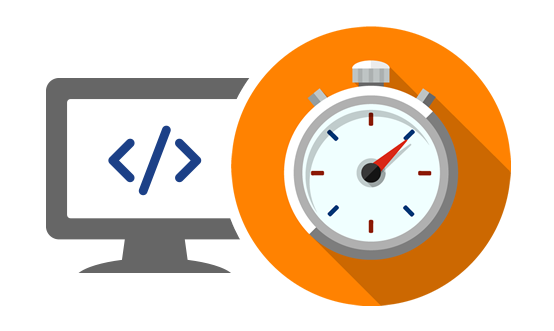
21 Jul Web Terminology: A Master Glossary of the Internet
In this day and age, it’s essential for all businesses to grow their web presence. Before you get started, however, there are a few terms that will be handy to have under your belt.
Use this glossary as a reference if you’re getting ready for a new website, in the process of growing your web presence, or simply researching ways that web activity can affect your marketing efforts:
Hosting
Essentially, hosting is the process of storing your site somewhere so the Internet can find it. Without a host, your site doesn’t exist as far as the Internet is concerned. To get more of an in-depth look at hosting, check out our previous post Web Hosting 101.
Server
A computer that provides information to other computers is called a server. It is where your host stores your website. There are many different kinds of servers, and each kind runs a specific software depending on its purpose.

All servers are computers, but their features & functions vary greatly.
Virtual Private Server (VPS)
A virtual private server is a server that is part shared and part private. It means that your site is still held on a shared server, but only with a few other people; you share a server but not the resources, so your site still loads quickly.
Domain Name Server (DNS)
The Domain Name Server, or DNS, is a directory of domain names (web addresses). The DNS is a type of naming system and is how the internet files away all connected information so it can quickly find the websites being requested.
URL
Your URL, also known as your domain name, is basically your internet phone number. It is the specific www. address for your site- no one else will have the same URL as you.
Content Management System (CMS)
A CMS is a system that makes it easier to make content changes to a website, such as editing the inventory, photos, text, etc. without much technological expertise. Popular CMSs include WordPress, Magento, and Squarespace.
Search Engines
A search engine is a system of software that searches through thousands of websites for information. The search engines you’re probably familiar with are Google, Bing, and Yahoo.
Search Engine Optimization (SEO)
Google and other search engines use a range of factors in order to rank websites for search results, and SEO is the process of adjusting your website to better appeal to them.
Brand
Put simply, your brand is how your business is perceived. It’s your trademark; a combination of visual, physical, and conversational elements that creates an emotional response for current and potential customers.
Brand identity
Your brand identity is made up by the tangible elements of your brand. This includes your logo, the fonts and colors you use, the images you choose, and more.
Brand awareness
If you ask one hundred people to identify your company based on a visual design, how many could do so? This analogy represents brand awareness. It’s the combination of your branding and marketing efforts, and is a good metric of how well your brand is performing in your market. The more consistent your brand identity, the stronger your brand awareness.

Apple is a fantastic example of strong, consistent branding.
Rebranding
Rebranding is the process of replacing, tweaking, or “facelifting” your existing brand. This can be through a new identity design, logo, marketing message, or any combination of these, and can range anywhere from a slight change to a complete overhaul of your brand.
There are many different, important reasons a company might choose to rebrand- and most companies will go through the process at least once! It’s a thorough, expensive, and fragile process, however, so you should always be careful about the timing and strategy involved with a rebrand.
CRM (Customer Retention Management)
Also known as Customer Relationship Management, your CRM is a software that tracks your clients details and all interactions you have had with them. This is done with the long-term goal of improving your business relationships with your clients.
Customer Conversion
Customer conversion is the transformation of potential clients into actual customers. Depending on the product or idea you’re marketing, the conversion can be an outcome other than a sale.
User Experience (UX)
User Experience (UX) design is the process of improving a user’s satisfaction with the layout of a website or computer interface. It’s the strategy of avoiding customer frustration- and is said that good UX goes unnoticed.
User Interface (UI)
User Interface (UI) design is the strategy behind the human-computer interaction, and ensures ease-of-use and proper functionality. It’s what keeps websites from being impossible to use, and is closely tied to User Experience design in most situations.
Browser
Your web browser is what you use to interact with the World Wide Web. Popular examples of a browser would be Safari, Firefox, Google Chrome, and Internet Explorer.

A web browser lets you navigate the internet.
Private Browsing Window
If you do not want your browser to save your browsing history and you do not want the sites you visit to track you, you have the option to use a private browsing window. All of the major browsers have this option, though you may have to look up how to access it (private browsing will not happen automatically).
Integration
An integration is the merging of two or more separate technologies for a common purpose. One example would be an integration between your POS and website, where an in-store sale would prompt the website to automatically remove that item or reduce it’s inventory by one unit.
Feed
When a system is constantly pushing new information out to other sources, this is called a feed. There are several types of feeds, and they can be used for a variety of reasons, but some of the most examples are news, blog, and CRM.
With a news or blog feed, subscribers might automatically receive up-to-date information whenever it’s posted to the website. For a CRM, the feed may deliver new client information from the website when a contact form is submitted, into the CRM as a new account.
Often, a feed is the key component of a software-to-software integration.
Plug-In
A plug-in is a separate software component built for one specific function. Unlike with an integration, plug-ins are developed to be added to another system and usually cannot function on their own.
Widget
Smaller than a plug-in, a widget is a micro-component built within a feature, plug-in or other entity. It is typically built for one small, specific purpose, such as displaying a calendar or listing most recent blog articles.
E-Commerce
Also known as electronic commerce, e-commerce is the term for buy-and-sell transactions over the internet. It is commonly used in reference to a website store.

eCommerce is the term for buying and selling online.
SSL
SSL, or Secure Sockets Layer, is a standard security technology that ensures all information passed between the browser and web server stays private. If you are running a website that takes visitors’ credit card information, or any other fragile personal data, you will need an SSL encryption.
Style Tile
A style tile is used as a broad overview of your brand for the purpose of planning a website design. It gives basic branding information, such as colors, fonts, buttons & image styles.
Wireframe
One way to think of a wireframe is as your website blueprint. It’s a visual guide to the layout of your site, and helps to show the overall functionality, behavior, and priority of content. Wireframes typically focus less on color, graphics, or other design elements- which is why style tiles are used in conjunction with them.
Mock-Up
If you’re having an agency build a custom website, at some point you’ll most likely get shown a mock-up. A mock-up is how an agency shows you what your site will look like without having to do any development work, so they can get your approval before moving forward.
Template Web Design
Typically a faster, easier solution for a website build, a template website comes pre-packaged with an existing layout and design elements. Rather than having to build out the entire website, an agency will often plug in content, images, colors, and graphics, which makes template websites the best option for smaller budgets.
Custom Web Design
If you are going for a unique, customized look that sets you apart from your competitors, or have a need for unique features on your website, a custom web design is probably your best bet. Custom websites are designed & built from scratch, so they offer much more flexibility for your needs. However, they are usually more difficult to maintain without coding knowledge and tend to be pricier overall.
Responsive Web Design
A website that is coded for a perfect experience on every size & type of device screen is a responsive website. Since more than half of internet traffic takes place on mobile devices, responsiveness should be the top priority for any website build.

Responsive websites adapt the content to fit the screen viewing it.
Front-End Development
A front-end developer is who the person responsible for what you can see and interact with on your site. They also make sure that your website is properly responsive on all platforms. Front-end developers need to be fluent in HTML, CSS, and JavaScript code to properly format a site.
Back-End Development
A back-end developer is responsible for work you can’t see or interact with on your site, but that’s crucial to keep your website running properly. A back-end developer is fluent in server-side code such as Ruby, Python, PHP, and .Net.
Sitemap
Just like it sounds, a sitemap is an index of every page on your website. It can be used on the site to show all pages to your visitors at once, and/or it can be uploaded to search engines to show them which pages should be crawled for search queries.
Bounce Rate
A bounce rate is determined by the percentage of people who visit your site and leave without viewing a second page. If you have a high bounce rate (over 45%), it may be time to reevaluate your design & SEO to make sure it’s not boring, off-putting, or misleading to potential visitors.
Caching
Caching is when your computer stores recent information so it can access it more quickly at a later time. There are four different types of caching: a browser cache, a memory cache, a disk cache, and a processor cache. Each are responsible for different types of information storage, but most is done in the background (except for your browser cache, which is the only kind most users can control).
If you update something on your website, but the new information isn’t showing up on your website, your browser is most likely caching the older version of that site. This can be tested by opening the same website in a private browsing window (which doesn’t have access to the previously stored information).
Bandwidth
The rate at which data is transferred from one point to another, usually within the span of a second. Bandwidth is usually expressed a bps, or bits per second, though modern networks usually measure in millions of bits per second, or megabits per second (mbps). If you notice a drop in internet speed, for example, your internet probably has a lower mbps than normal.

Bandwidth determines how quickly your internet and/or server will load things.
Resolution
The number of pixels present in a screen is called the screen resolution. The more pixels, the better the resolution and the clearer the screen will be to view.
Header
Typically comprised of a company logo and a navigation bar, a header sits at the top of all your website pages.
Footer
Often comprised of relevant copyright information and the name of the company that designed the website, the footer sits at the very bottom of all your website pages. Occasionally a footer will also include a secondary navigation bar with links such as “About Us,” “Terms of Use,” “Contact,” “Help,” etc.
Navigation
Though there a different types of website navigation (hierarchal, global, and local), the idea is basically the same; the navigation system helps a user find the information they need on your site. It’s a road map of website content, if you will. This is done through a consistent navigation structure such as a dropdown menu, tabs, a sitemap, a navigation bar, etc.
Landing Page
The page that you arrive, or “land” on when you initially visit a website is called a landing page. For marketing and advertising purposes, however, a landing page is actually a separate, standalone web page from your main website. This limits the interaction options that visitors have to encourage them towards your eventual conversion goal.
There are two types of marketing landing pages. A clickthrough landing page prompts visitors to click through to another page, typically to “warm them up” to a point where they’re more comfortable making a purchase. A lead generation landing page captures user data such as an email address and a name, which will allow you to market to a specific client at a later time.
Some examples of lead generation landing pages are free trials, webinar registrations, contest entries, and discount coupons or vouchers, among others.
Meta Data
Data that describes other data is called meta data. There are two types of meta data, structural and descriptive. Some examples of meta data would be sizes of files, the time and date that certain data was created, the creator or author of the data, what standards were used, etc.
Favicon
Short for favorite icon, a favicon is also known as a shortcut, website, tab, bookmark, or URL icon and is a file that contains one or more icons. Browsers with favicon support often display a page’s favicon in said browser’s address bar and will typically also show up in the bookmarks bar.
Curious about a term we missed, or looking for more information on any of the terms on this page? Give us a call at (971) 888-7576- we’re happy to help!



Sorry, the comment form is closed at this time.